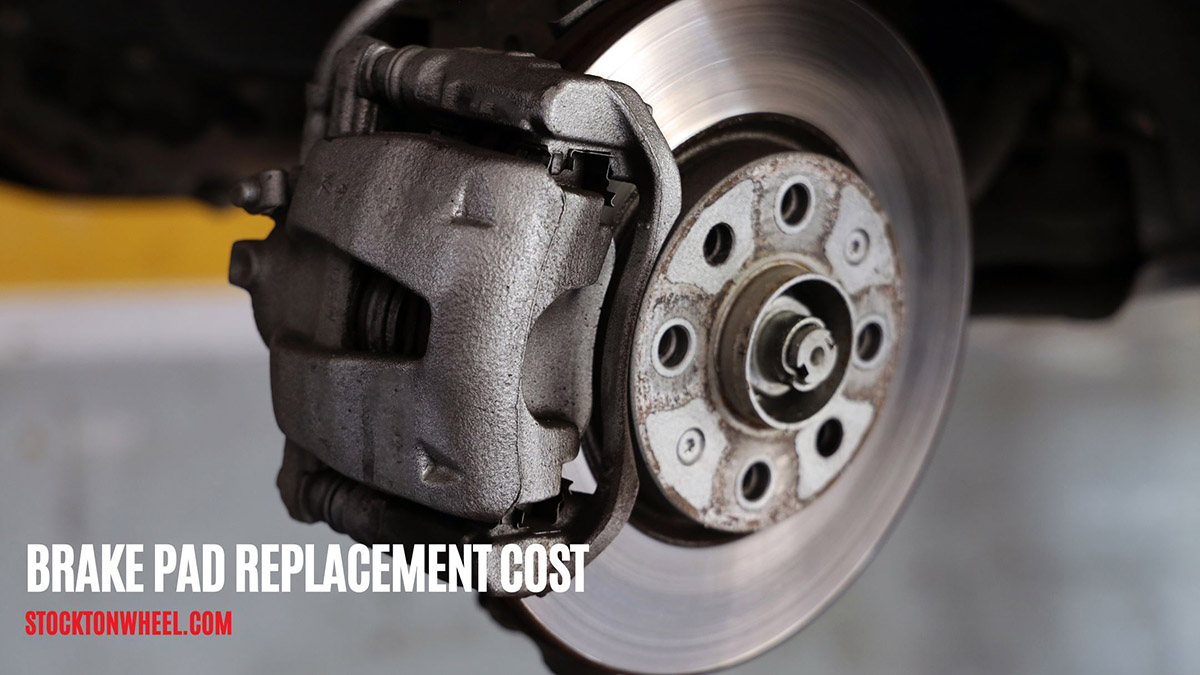Front And Rear Brake Pad Replacement Cost

Brake pads: the unsung heroes stopping your beloved machine from becoming a very expensive lawn ornament. We often take them for granted until that telltale squeal pierces the serenity of your drive, signaling it's time for a brake pad replacement. But before you resign yourself to emptying your wallet, let's dive into the fascinating world of front and rear brake pad replacement costs, exploring the factors that influence the final bill and highlighting the differences across various car models and technologies.
The Price is Right? Understanding the Factors
Several elements contribute to the overall cost of replacing brake pads. It's not just about the pads themselves. Here's a breakdown:
- Pad Material: From organic to semi-metallic to ceramic, the material dictates performance, longevity, and, of course, price. Organic pads are generally the cheapest but wear out fastest, while ceramic pads offer superior performance and longevity but come with a higher price tag.
- Rotor Condition: If your rotors are scored or warped, they'll need resurfacing or replacement. Resurfacing is typically cheaper, but replacement might be necessary depending on the damage. Adding new rotors significantly impacts the total cost.
- Vehicle Model: A basic sedan like a Honda Civic will generally have cheaper parts and labor compared to a high-performance sports car like a Porsche 911. This difference stems from parts availability, complexity of the braking system, and labor rates.
- Brake Technology: Cars with advanced braking systems, such as those found on electric vehicles (EVs) with regenerative braking or performance cars with carbon-ceramic brakes, can have significantly higher replacement costs.
- Labor Costs: Shop rates vary wildly depending on location and the reputation of the mechanic. Dealerships typically charge more than independent shops.
Front vs. Rear: A Braking Bias
Front brakes generally bear the brunt of the braking force due to weight transfer during deceleration. This means front pads typically wear out faster than rear pads. Consequently, front brake pad replacement is often more frequent and, in some cases, slightly more expensive. However, modern vehicles with sophisticated electronic brake force distribution (EBD) systems can even out the wear somewhat. This makes it important to inspect *both* front and rear brakes regularly.
Cost Comparison: Specific Examples
Let's look at some examples to illustrate the cost differences. These prices are estimates and can vary based on location and shop. The prices below do not include rotor replacement or resurfacing.
| Vehicle | Engine/Tech | Front Pad Replacement Cost (Estimated) | Rear Pad Replacement Cost (Estimated) |
|---|---|---|---|
| Honda Civic | 1.5L Turbo | $150 - $300 | $120 - $250 |
| Tesla Model 3 | Standard Range Plus (Regenerative Braking) | $200 - $400 | $150 - $350 |
| BMW M3 | 3.0L Twin-Turbo | $300 - $600 | $250 - $500 |
| Porsche 911 GT3 | 4.0L Naturally Aspirated (Optional Carbon Ceramic Brakes) | $500 - $1500 (Steel) / $2000+ (Carbon Ceramic) | $400 - $1200 (Steel) / $1500+ (Carbon Ceramic) |
As you can see, the range is significant! The Porsche 911 GT3 with carbon-ceramic brakes represents the extreme end of the spectrum. Note that EVs may see extended brake pad life due to regenerative braking; the ranges reflect varying driving habits and climate conditions.
DIY vs. Pro: A Tough Decision
Replacing brake pads is a task many experienced DIY mechanics can tackle. However, it's crucial to have the right tools, knowledge, and a healthy dose of caution. Here are some pros and cons:
- DIY Pros:
- Significant cost savings.
- Satisfaction of doing it yourself.
- Opportunity to learn more about your car.
- DIY Cons:
- Requires time, tools, and mechanical aptitude.
- Risk of incorrect installation, leading to brake failure.
- Potential voiding of warranty if not done correctly.
- Professional Pros:
- Expertise and experience.
- Warranty on parts and labor.
- Convenience and peace of mind.
- Professional Cons:
- Higher cost.
- Finding a reputable mechanic can be time-consuming.
Real-world Driving Impressions: After a recent brake pad replacement on my daily driver, a Subaru WRX, I noticed a significant improvement in stopping power and pedal feel. I opted for a set of upgraded semi-metallic pads, which provided better bite in both wet and dry conditions. While slightly more expensive, the added performance and safety were well worth the investment. On the other hand, a friend who replaced the pads on their Toyota Prius didn't notice much of a difference, highlighting that with regenerative braking, the quality of the pads is far less important.
Making the Smart Choice
Ultimately, the best approach to brake pad replacement is to be informed, get multiple quotes, and choose a solution that fits your budget and driving needs. Don't skimp on safety, but also don't overspend on components you don't truly need. Regular brake inspections are crucial, not only for preventing costly repairs but also for maintaining the safety of you and your passengers.
And now for the fun part... Let's debate! Which is the better choice: performance brake pads that may wear out faster, or standard pads that last longer but offer less aggressive stopping power? Let the comments begin!
